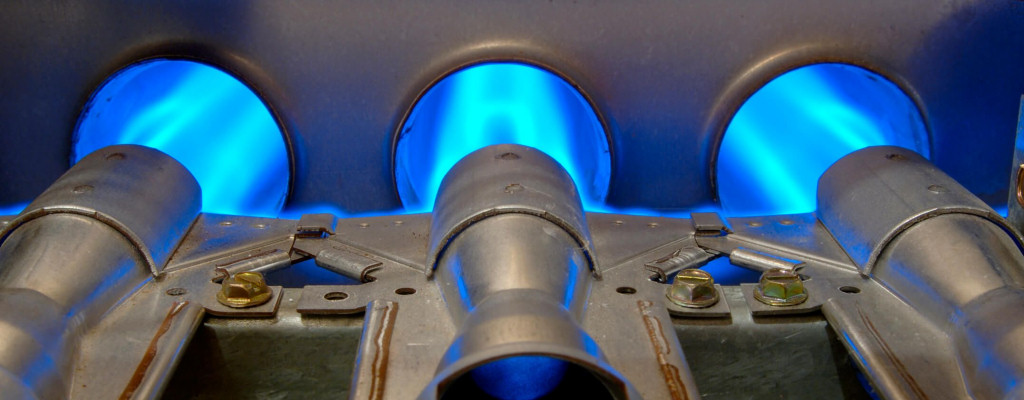The short answer is yes, and here’s how it can happen. Winter’s frigid temperatures increase your family’s reliance on your home’s heating equipment. The extra usage also means that if your furnace isn’t working correctly, it might become a fire hazard and threaten your family’s safety.
The National Fire Protection Association (NFPA) asserts that heating appliances are the leading source of home fires, leading to nearly 50,000 emergency calls, 500 deaths, and over $1 billion in property damage annually. While space heaters and fireplaces cause most of these fires, furnaces are responsible for roughly 12%. Our neighborly team wants your family to stay safe, so here are the most likely causes of furnace fires and how you can minimize them.
Furnace fire causes
Aging furnaces can be safety hazards, since they tend to fall into disrepair over the years and their mechanical components simply wear out as time passes. But, whether your furnace is decades old or brand new, you should be aware of the most likely causes of furnace fires.
Overheated motors
A furnace motor can overheat in many different ways. Here are the biggest risks:
1. A clogged filter can restrict airflow and force the motor to work harder. Eventually, the motor can overheat, increasing the risk of fire.
2. Dirt can build up on the motor, causing it to hold heat, which can lead to a fire.
3. Exposed or corroded wiring can cause electricity to arc, greatly increasing the chances of an electrical fire.
4. Seizing, worn, or unlubricated bearings will produce heat via friction as the furnace runs. Without repair or replacement, they will eventually fail, stopping the motor in its tracks and potentially sparking a fire.
Blocked furnace flue or exhaust
Natural debris, such as animal nests, leaves, or twigs, can obstruct the furnace flue, lowering your system’s oxygen intake. This shortage then results in soot build-up and improper ventilation, limiting efficiency and increasing the risk of a flame rollout. This event happens when fire escapes the heat exchanger and burns other parts inside your furnace. If this problem persists, your heating system can be badly damaged, and the fire could spread to areas outside the furnace.
Clogged or dirty heat exchanger
Your system’s heat exchanger is an isolated combustion chamber where the heat produced by your furnace is transferred to the air to be distributed throughout your home. A heat exchanger blocked with soot or corrosion poses the same dangers as a blocked furnace flue – reduced performance and a high risk of flame rollout.
Cracked or dislodged heat exchanger
Numerous problems can happen if something cracks the heat exchanger, such as corrosion or normal wear and tear over time. First, it can lead to reduced airflow and increased potential for flame rollout. Second, it releases carbon monoxide (CO) into your home. Inhaling this gas can be deadly, so never ignore your CO alarms. Finally, CO gas can also flash back to the source of the leak and ignite if it reaches a flame.
Not enough or too much gas pressure
Gas furnaces require a precise mixture of natural gas and air to produce safe and efficient combustion. Unfortunately, too little pressure can result from clogged burner orifices or insufficient incoming gas flow. This problem makes the burner flames more likely to roll out and also leads to unwanted condensation within the heat exchanger, accelerating the rate of corrosion.
On the other hand, high gas pressure can create excessive heat inside the unit, which can ignite soot inside the heat exchanger. A fire like this can quickly spread to other areas around your furnace.
Preventing furnace fires
Knowing the various ways your furnace can catch fire, let’s talk about the steps you can take to avoid furnace fires.
1. Change the filter regularly. Check your furnace filter every month and change it when it appears dirty or at most, every three months – whichever comes first.
2. Inspect the furnace flue and exhaust. Head outside, give the exterior vents a good looking-over for obstructions and remove any that you find.
3. Keep combustible items away from the furnace. Cardboard boxes, clothing, paper products, and other combustibles should always be kept more than three feet away from the furnace and all other heating equipment in your home.
4. Have a flame rollout switch installed. This safety device detects if a fire or hot gases are inside your furnace’s burner compartment. If the rollout switch trips, turn off your furnace and have it inspected as soon as possible to correct the problem before it causes a furnace fire.
5. Schedule professional furnace maintenance. It can be challenging to recognize when your furnace is performing unsafely. Whether you’ve noticed warning signs or not, it’s wise to have our pros give your furnace a clean bill of health each year.
Schedule furnace services today
Do you need us to resolve a problem with your furnace? Did you forget about your yearly tune-up until you read this article? Whatever you need, Hey Neighbor Heating & Cooling is here for you. Our friendly HVAC experts can inspect, clean, and test your heating system to ensure safe and efficient operation. If anything looks amiss, we’ll recommend the proper course of action, giving you valuable peace of mind that your furnace is unlikely to catch fire. Please call Hey Neighbor today for more info or to schedule furnace maintenance. We can fix that!™


Comments are closed